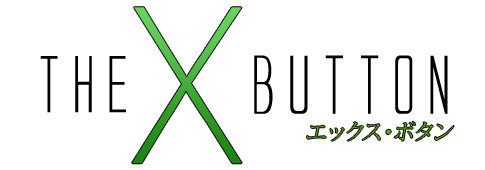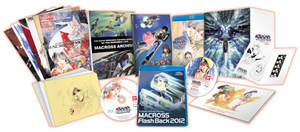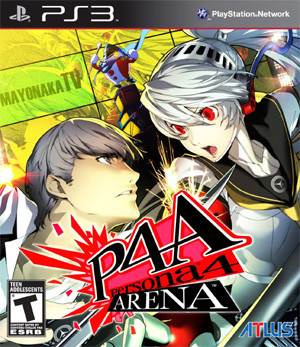- remind me tomorrow
- remind me next week
- never remind me
The X Button
Time Will Crawl
by Todd Ciolek,

Macross: Do You Remember Love? figures into the column this week, since the new Blu-Ray comes plenty of extras, some fan-enraging edits, and a PlayStation 3 game. Many remember Macross for introducing them to anime, either in its original form or through Robotech. I remember it for one additional thing: showing me that anime-based games could be awful.
It was 1997, and I had just figured out how to play imports on my Sega Saturn, thanks to Cyberbots. I was eager to fight the system and buy more games that U.S. publishers didn't want me to have, but I ignored the impulse to pick up something critically acclaimed, like Thunder Force V or Princess Crown. I was on a Macross kick, and Bandai had just released a Saturn shooter based on Macross: Do You Remember Love?, which I knew only through a spotty, poorly dubbed edit. Even though the game was ten dollars more than other imports, I saw this as the perfect opportunity to get a decent Macross game and a good look at the movie.

Some outlets were kind to the Macross: Do You Remember Love? game because it's better than the legendarily horrid Macross VF-X game for the PlayStation. Yet that didn't make Macross: DYRL any less disappointing to me. It's an utterly mediocre 2-D shooter that recreates key movie scenes with bland level design and ugly CG graphics, doubly offensive considering how the film shows off excellent hand-drawn animation. At least it has some new footage that bookends the film.
So I learned a valuable lesson. Just as games based on Western comics and movies were usually awful, anime licenses produced the same percentage of crap. I could've picked up on this by watching others gripe about the Dragon Ball Z and Sailor Moon games they imported, but there's no better teacher than paying your money and taking your chances.
NEWS
FINAL FANTASY COMES TO OUYA IN NEXUS OF STRANGE NAMES
There's a lot of talk nowadays about Ouya, a new console that uses Google's Android system. Its aim? Providing cheap, creative games on hardware that's just as easily customized and hacked as open-source Android smartphones. Over-ambitious or not, the idea's earned quite a bit of backing both financially and critically. And it recently garnered some support from Square Enix, who pledged to have the Android version of Final Fantasy III available at Ouya's launch.

This isn't any great risk for Square Enix, of course. Final Fantasy III is already out for Android phones, and bringing it to the Ouya should be quite easy. Yet it's an important step for the system, which is designed to subvert the high production costs and mainstream tastes that dominate today's consoles. Having Square Enix on board at least shows that the Ouya won't be a mere catalog of cheap Angry Birds clones and Poop Rearing Simulator Mobile.
FIST OF THE NORTH STAR KEN'S RAGE 2 PROMISES HEAD EXPLOSIONS TWICE AS GORY
Fist of the North Star: Ken's Rage 2 was a surprise at this year's E3, mostly because it was so swiftly approved for Western releases. Fist of the North Star has never been particularly popular in the States, and it was surprising to see the original Ken's Rage arrive here. Early previews of the sequel claim it'll have twice as much material, and that includes Raoh's story arc as well as characters from the Tentei and Asura camps. This places the game in the second leg of the series, when everyone's a little older yet just as violent.

The first Ken's Rage 2 screens don't look all that different from the original, though the game now breaks into comic-panel scenes for special attacks. It also includes dodging and dashing maneuvers, something the original needed in abundance.

While the screenshots depict only Ken and his former childhood friend Juza (who wasn't playable in the first game) tearing up some post-apocalyptic outlaws, artwork on the official website shows many other characters, from a grown-up Lin to the intensely America-themed bounty hunter Ein. The game's out in Japan for the Xbox 360 and PlayStation 3 this December (under the title True Fist of the North Star), and it's evidently coming to Europe and North America afterwards. We just don't know exactly when.
BREAKING NEWS: THE NEXT HARVEST MOON GAME COMES WITH A YAK
Perhaps one day Natsume will bleed the animal kingdom dry in their quest to include different plush toys with Harvest Moon games. But that day is still far off, because Harvest Moon: A New Beginning will come with a stuffed yak when it arrives on the 3DS later this year.

Reserving the game at GameStop and some yet-to-be-announced retailers (mostly likely Amazon) gets you the yak. It also gets you the next Harvest Moon, in which players customize a farmer hero or heroine to tend land and appease a pagan harvest goddess.
IMPORT ROUNDUP: JULY
MACROSS: DO YOU REMEMBER LOVE? HYBRID PACK  Developer: Artdink
Developer: ArtdinkPublisher: Namco Bandai Platform: PlayStation 3 Like Bandai's other Hybrid Packs, this Macross: Do You Remember Love? collection isn't just a game. In fact, the big selling point is the nice new Blu-Ray edition of the original Macross movie that delighted '80s anime fans and made people sympathize with ditzy idol singer Minmay for the first time ever. And if you get the 30th Anniversary Limited Edition, there's a pack of six mini-posters, the Flashback 2012 epilogue, a booklet, a “magazine archive” of the movie, some line-art cards, a download code for that crappy '90s Macross: DYRL shooter, and five actual frames from the movie reel. Sadly, it does not include the fascinatingly bad dub of the film that many of us unwittingly rented under the title Macross in Clash of the Bionoids. Oh yeah, and there's a PlayStation 3 game somewhere in all that. It's called My Boyfriend is a Pilot 2012, referencing one of Minmay's songs, and its various missions replicate scenes from the movie. Its perspective isn't limited to the film's hero (and Minmay's one-time boyfriend) Hikaru, though, as the playable ships and characters include other major characters and even a Zentraedi battle pod. And yes, it replicates the Max-Milia dogfight that many still consider the high-water mark of '80s robot battles. It's all reminiscent of the fairly solid Macross Last Frontier game that was bundled with last year's Macross Frontier film. A shame we'll have to wait until 2025 for the Macross Plus 30th Anniversary Hybrid Pack. Import Barrier: There's no regional lockout, so the game will run on a U.S. system. The same goes for the movie, just in case you were wondering. Chances of a Domestic Release: Not good, due to those nasty legal knots tied by Robotech. That again applies to both movie and game. |
TAIKO NO TATSUJIN: CHIBI DRAGON TO FUSHIGINA ORB  Developer: Namco
Developer: NamcoPublisher: Namco Bandai Platform: Nintendo 3DS Taiko no Tatsujin made a brief trip to America back in 2004, when the PlayStation 2 hosted it as Taiko: Drum Master. That was it for the series as far as Western releases went, but the Taiko games went just about everywhere in Japan: the Wii, the DS, the PSP, the iPhone, the Android, and, of course, the arcade. The 3DS game retains the same basic idea that the arcade games put forth and the DS ports adapted: players tap the screen to simulate pounding a taiko drum, all while happy-faced mascots WadaDon and WadaKatsu look on and other characters frolic to the beat. This time around, those characters include Doraemon and his entourage, the pop-star recruits of The Idolm@ster, and felynes and other beasts from Monster Hunter. Synth-voiced virtual diva Hatsune Miku and her little friends also show up to cavort, which seems entirely appropriate for a music game. Yet this installment of Taiko no Tatsujin adds a story mode in line with its subtitle, translated as The Little Dragon and the Mysterious Orb. In an RPG-like quest, WadaDon (or is it Don-chan?) and the little dragon in question travel a fantasy realm, confronting enemies in battles that conveniently play out like regular Taiko no Tatsujin musical levels. Of course, players can skip all of this and head straight for the multiplayer, which allows up to four 3DS systems to join together. Import Barrier: It's a simple, easily understood game, but it's also a Japanese 3DS game. And that means it's region-locked. Chances of a Domestic Release: None too good, considering how long it's been since Namco brought a Taiko game to a U.S. console. |
TIME TRAVELERS  Developer: Level-5
Developer: Level-5Publisher: Level-5 Platform: PS Vita/Sony PSP/Nintendo 3DS Time Travelers is an adventure game, one those titles driven by plot and dialogue and melodrama. And it's likely to be the biggest adventure game of the year. Why's that? Well, it's backed by the production values of Level-5 (Professor Layton, White Knight Chronicles) and it's directed by Jiro Ishii, who was behind the critically acclaimed adventure game 428: In a Blockaded Shibuya. Time Travelers is set in Tokyo as well, but with a broader focus. It starts 18 years after an abyss called the Lost Hole unfurls above the city and destroys much of the urban landscape. Less than two decades later, the city's rebuilt with a space elevator and a mysterious power source and everything. Ishii drops a variety of characters into this futuristic mystery. Yuri and Mikoto are introduced as two high-schoolers on the edge of romance, but Yuri struggles with unpleasant memories (possibly that Lost Hole deal). Hina Fushimi's a low-level TV reporter, and she's tracking a notorious terrorist called Skeleton. Terrorism also figures heavily into detective Soma Kamiya's backstory, as some revolutionaries force him to join them by kidnapping his wife and child. Kyugo Shindou bills himself as the inventor of a time machine, but he's really just a con man. Lastly, there's Ressenti Man (get it?), a college dropout whose prolonged unemployment leads him to don a superhero costume and patrol the streets. Time Travelers mixes all of these stories together in one plotline where even simple choices can change everything. The action itself is rarely more demanding than a properly timed button-press, but players can also stop time at certain points, further altering the storyline. Import Barrier: You'll get nowhere without understanding the dialogue, but at least the PSP and Vita versions aren't region-locked. Chances of a Domestic Release: Minimal, though Level-5 keeps an eye on overseas markets. |
NEXT WEEK'S RELEASES
PERSONA 4: ARENA  Developer: Arc System Works
Developer: Arc System Works Publisher: Atlus Platform: PlayStation 3/Xbox 360 MSRP: $59.99 Persona has earned a rare honor. With Arena, it joins Final Fantasy and Tengai Makyo among the few RPG series popular enough to get their own fighting games. And this isn't a shaky side project rushed out by the developers of Twinkle Queen or anything. Atlus turned it over to Arc System Works, makers of Guilty Gear, BlazBlue, and the only good Fist of the North Star fighter. So Persona 4: Arena sports the same brand of high-resolution animation that looked so darn pretty in BlazBlue. Set not so long after the events of Persona 4, Arena reunites the cast for another investigation of the Midnight Channel and the strange psychological landscapes it hides. This time around, it results in much brawling among the characters: the once-nameless hero Yu, martial-arts nut Chie, average-guy Yosuke, reserved Yukiko, sensitive punk Kanji, uptight detective Naoto, and the goofy little dream-world mascot called Teddie. Persona 3's Aigis, Mitsuru, Elizabeth, and Akihiko are also playable, along with the (mostly) new combat android Labrys. Some may find that a slight roster for a fighting game, particularly when Rise, a party member from Persona 4, appears only as an announcer. Look at it this way: it has more combatants than the original BlazBlue. Each fighter is two attackers, in a way, as Arena replicates the monstrous Persona alter egos hosted by the characters. These Persona creatures can be summoned mid-battle, and two of the game's four attack buttons are dedicated to Persona strikes and the “Persona Rush.” The other two buttons release light and heavy attacks, suggesting that this isn't as terribly complicated as Street Fighter or The King of Fighters XIII. But there's a lot to the fighting. Persona projections can take damage when they're visible, and players can trade bits of their life meter to help turn the tide of a losing battle. Arena also imports some ideas from its RPG source, as the characters can suffer various status ailments mid-match. That said, a good portion of fans will pick up Arena just to see favorite Persona characters bash each other in manic, hi-res glory, and that's all but guaranteed. |
discuss this in the forum (21 posts) |